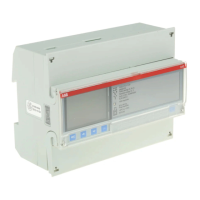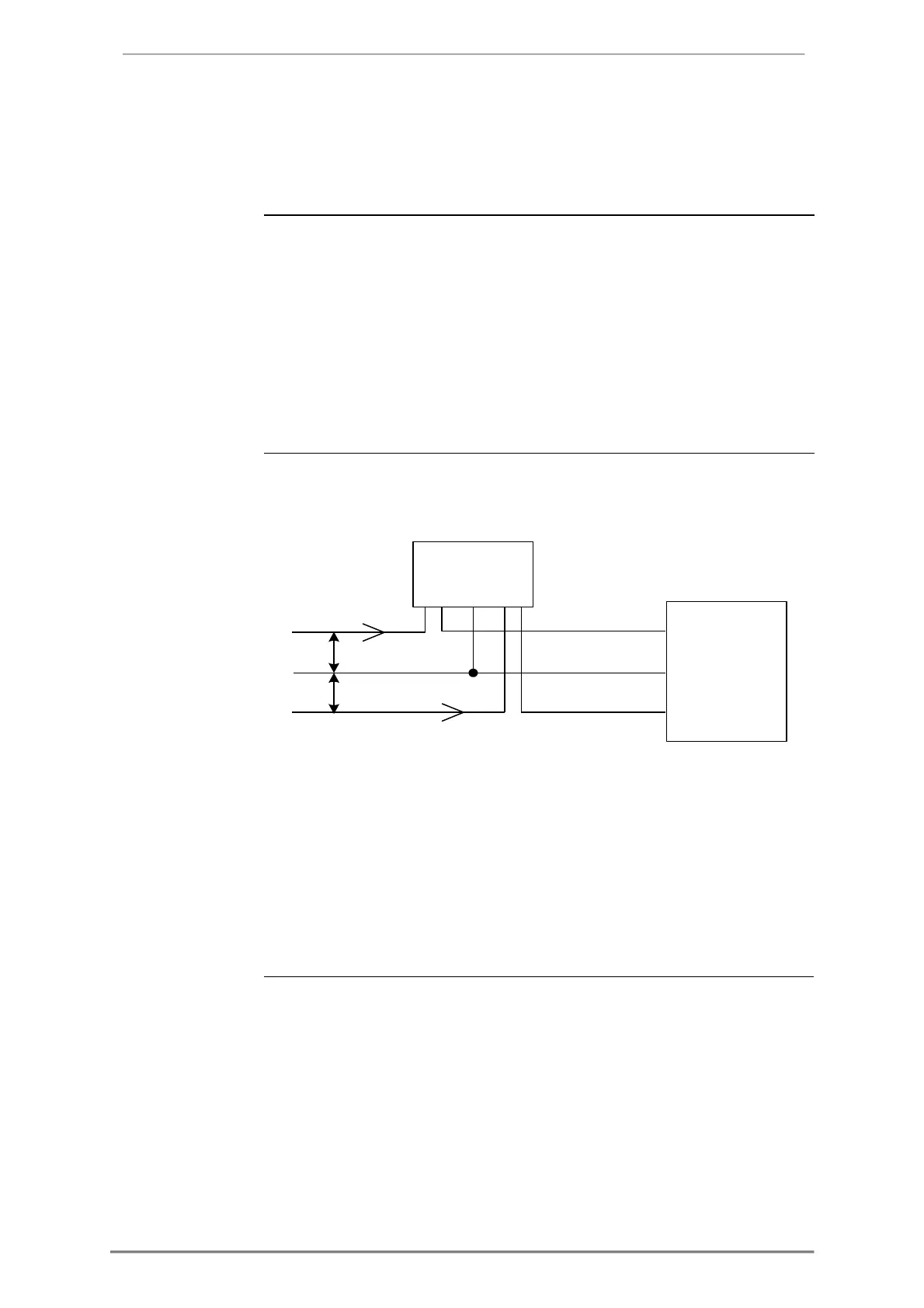Measurement Methods
A43/A44 88 2CMC48001M0201
User Manual Revision: C
7.1.2 3-Phase, 2-Element Metering
2-element metering in a 3-wire system
The 2-element metering method is used in systems with 3 wires, normally a 3-
phase system that does not have a neutral conductor. A 2-element meter can be
used irrespectively of the load being balanced or not.
In a 2-element meter the L2 voltage is used as the voltage reference and the
volt-age difference between that voltage and the L1 and L3 voltage are
measured and multiplied by its respective current. The active energy consumed
by the load is the product of momentary voltages U1-U2 and U3-U2 and the
currents I1 and I3 integrated over the desired measuring time period.
Illustration The following diagram shows a 2-element meter measuring the active energy (E)
consumed by a load.
I1
Load
L1
U1-U2
Meter
L2
U3-U2
I3
L3
dttItUtUtItUtUE ))(3))(2)(3()(1))(2)(1((
If no harmonics is present and the rms values of the voltages and currents are
constant, the total active power can be expressed as:
Ptot = P1 + P3 = (U1-U2) x I1 x cos 12 + (U3-U2) x I3 x cos 32
where φ12 is the phase angle between the (U1-U2) voltage and the I1 current
and φ32 is the phase angle between the (U3-U2) voltage and the I3 current.
The vector diagram below shows the vectors for the phase voltages (U1, U2,
U3), the phase currents (I1, I2, I3) and the element voltages (U1-U2, U3-U2)
for
a pure resistive load where the phase currents are in phase with its
respective phase voltages.

